
WelCom December 2024/January 2025
This month we arrive at the end of WelCom’s now eight-year Hīkoi Whakapono: Journey of Faith, with a visit to the historic Pukekaraka – hill of the Karaka trees – a spiritual, cultural and community hub of Ōtaki.
We began our faith journey in February 2017 at Te Wairoa Parish, Northern Hawke’s Bay – one of the earliest Catholic communities in New Zealand and Palmerston North Diocese’s northern-most parish on the East Coast of the North Island. From there, over the years since, our faith journey has visited each of the many pastoral areas, parishes and schools of the two dioceses in both the North and South Islands, to learn and profile to our readers more about their histories, their stories, their people and their faith communities.
We now conclude our Hīkoi Whakapono at Pukekaraka in Ōtaki – the first Catholic Mission created in the region of Wellington at the invitation of Ngāti Kapu rangatira Tonihi in 1844. Set in the heart of Ōtaki, Pukekaraka with its marae, church and school, is surrounded by the Tararua Mountains, Ōtaki River, and Kāpiti Island.
Photos: Annette Scullion; Paul Bayliss
Pukekaraka: a legacy of Faith, Whakapapa, and Community
Contributing writers: Oriwia Raureti, Wawata Johnson, Debbie and Mike McAsey, Urutākai Cooper, Fr Alan Roberts, Fr Phil Cody sm, Fr Peter Healy sm.
Ko ngā Wawata o Te Raiti Tōnihi
Nestled in the heart of Ōtaki, St Mary’s Church, known as Hato Maria, represents a sacred partnership between Ngāti Kapu and the Catholic Church, enduring since its founding in 1844. This historic site, Pukekaraka, where faith and whakapapa (heritage) converge, stands as a beacon of unity between Māori and Katorika traditions. Hato Maria embodies a welcoming spirit, where generations have nurtured a community of spirituality, culture, and connection. Through shared values and traditions, Pukekaraka has flourished as both a spiritual and cultural home, inviting visitors and residents alike into its rich, storied heritage.
Nga āhuatanga a te hapōri
The Pukekaraka community is a sanctuary where whakapono (faith), hapori (community), and whakapapa blend seamlessly, driven by shared responsibility and a collective vision. Its unique governance structure, known as the Ohu model, fosters participation from every community member, reflecting the kaupapa Māori principles of unity and shared purpose. The governance body, Te Mana Whakahaere, represented by Ohu Whakakotahi, includes both Ngāti Kapu and archdiocesan leaders who work together to uphold the vision and strategic direction of Pukekaraka.
Within the Ohu model, the community is organised into three Kāhui divisions, each with distinct roles. Kāhui Kaupapa Māori focuses on cultural and educational values, Kāhui Whakahaere oversees logistical support and resource management, and Kāhui Ako is dedicated to education and spiritual development. Together, these groups create a cohesive structure that supports Pukekaraka’s mission and embodies a model of shared responsibility. Each community member’s contribution is valued, reinforcing resilience and a deep-rooted sense of connection that defines Pukekaraka.


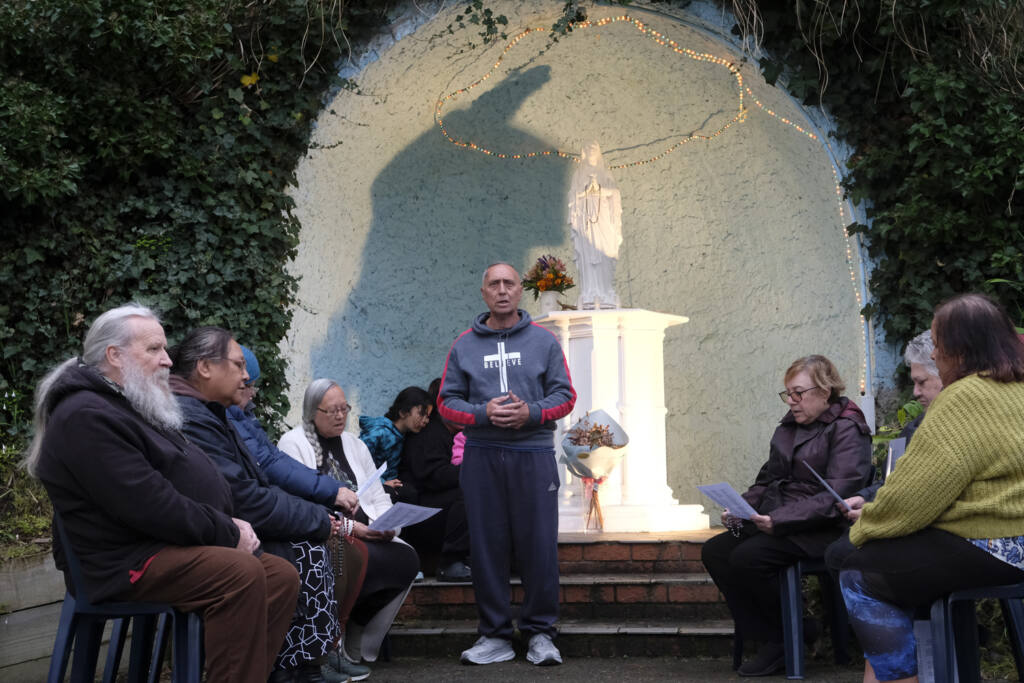
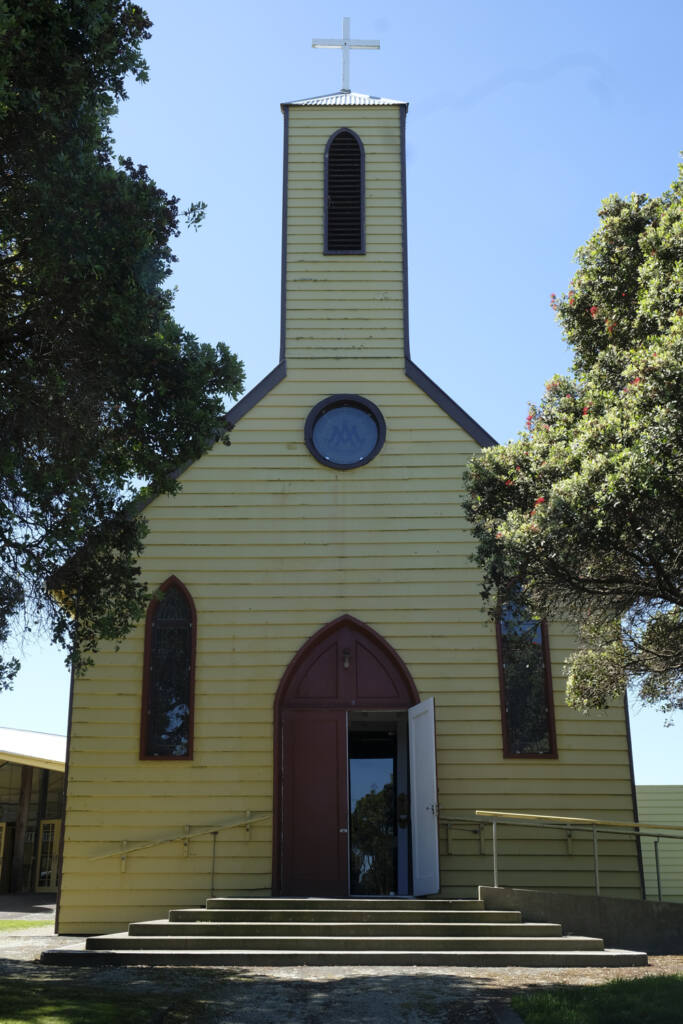
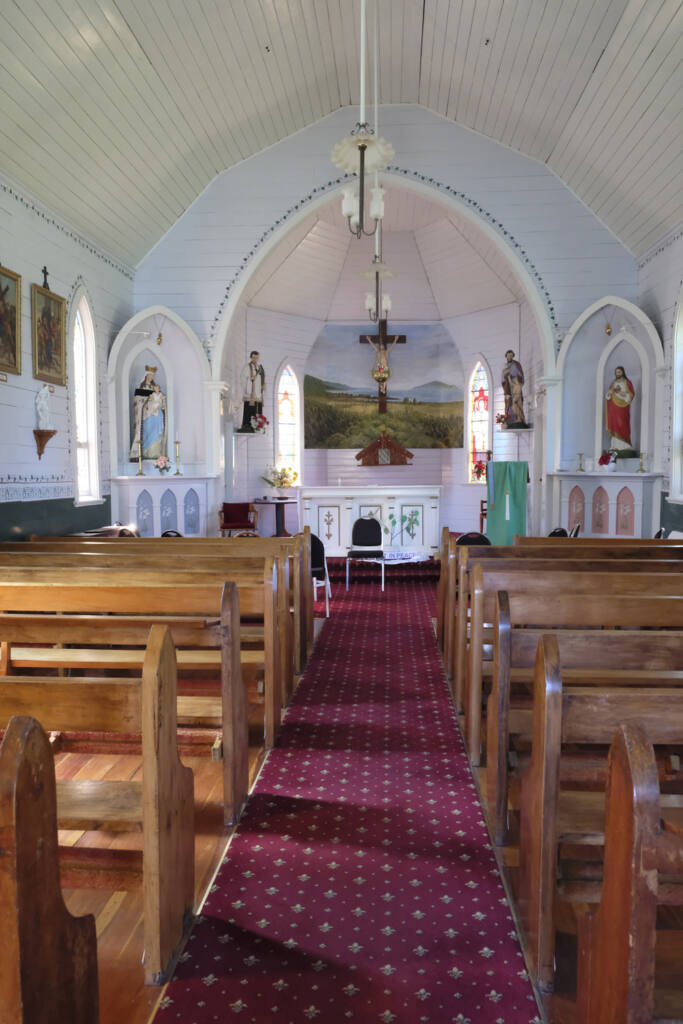

Te Rōpū Mariana
Since its foundation in 1844, the Marist community has been an integral part of Pukekaraka, invited by Ngāti Kapu to support the spiritual and educational growth of the Katorika mission. The Marists, known for their dedication to Māori mission work, embraced te reo Māori and immersed themselves in local traditions, becoming valued spiritual and community leaders. The transition of leadership in 2015 allowed the Archdiocese to assume daily management while Marist priests continued their involvement in community life.
Today, figures like Fr Phil Cody sm, Fr Peter Healy sm, and Fr David Gledhill sm remain pillars of support, alongside Fr Alan Roberts of the Archdiocese. Together, they lead regular Mass, pastoral care, sacramental preparation, and community outreach. Their commitment preserves a vibrant community where Ngāti Kapu and Catholic faith remain deeply interwoven, providing a strong foundation for future generations to draw upon.
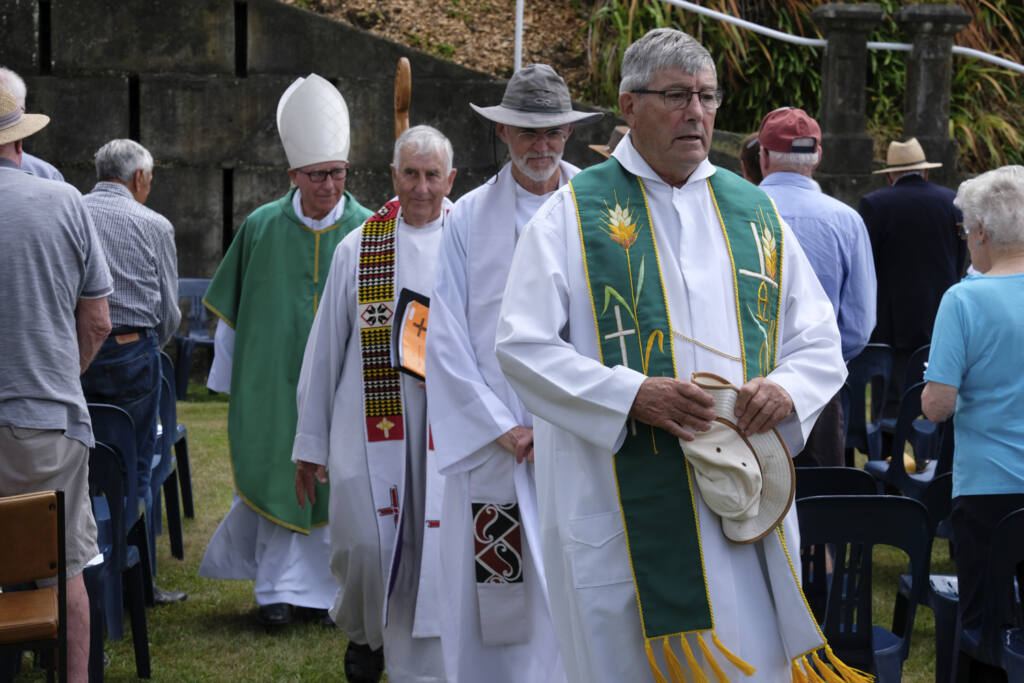
Te Pūtahi Whakawhiti
Joining the Pukekaraka community in 2018, parish priest Fr Alan Roberts has become a vital presence, respected for his deep commitment to Pukekaraka’s mission and Ngāti Kapu’s vision. Representing the Archdiocese, Fr Alan has worked tirelessly to uphold the community’s founding principles, supporting the mission’s core intentions while supporting an inclusive leadership model that honours Pukekaraka’s whakapapa. His collaborative approach with the Archdiocese and close work with Ngāti Kapu leadership has strengthened the community’s sense of unity, reinforcing both faith and cultural values. Fr Alan’s guidance has been instrumental in maintaining Hato Maria’s status as a sanctuary, ensuring that each Mass, programme, and outreach activity embodies the spirit of shared responsibility and mutual respect.
Te Kura Māori

Hato Petera Kaniera, or St Peter Chanel School, once a boarding school led by the Sisters of St Joseph, is at the heart of Pukekaraka’s educational mission. Founded in the late 19th century, the school has offered generations of tamariki (children) an education grounded in both Māori values and Catholic teachings. Led by a principal from Ngāti Kapu, the small yet dedicated teaching team includes Urutakai Cooper, a full-time teaching Principal and DRS, Jay Pué, a 0.8 classroom teacher, and Fontain (Uruorangi) McNaught, a kaiāwhina (support worker), who work to create a nurturing environment where students can grow in self-identity and faith.
Hato Petera aims to renew its curriculum, aligning it more closely with Katorika Māori identity. Integrating te reo Māori, tikanga-ā-iwi (societal customs), and teachings focused on the example of Maria (Mary), the school provides a unique educational experience that connects students to both wairuatanga and whakapapa. Supported by a partnership with the Ministry of Education and the Archdiocese of Wellington, the school aims to meet the academic and cultural needs of Ngāti Kapu whānau, ensuring that Hato Petera remains an anchor for the community, shaping future generations in faith and knowledge.
Ngāti Kapu ki Pukekaraka
Ngāti Kapu’s role as tangata whenua (people of the land) is central to Pukekaraka’s history and future. Since 1844, this partnership with the Catholic Church has been grounded in shared values of faith and stewardship. Ngāti Kapu’s responsibility as kaitiaki (guardians) encompasses not only the physical land but also the spiritual life that thrives within Pukekaraka. The Kawenata signed in 2020 formalises this role, ensuring that Māori traditions, language, and spiritual beliefs are integral to all aspects of Pukekaraka’s operation.
The vision of Ngāti Kapu continues to shape Pukekaraka’s future, emphasising education, health, and community development initiatives that celebrate Māori culture and spirituality. This commitment extends beyond Pukekaraka’s boundaries, inspiring other communities to foster partnerships that respect both tradition and progress. Ngāti Kapu’s leadership ensures that Pukekaraka remains a living example of wairuatanga (spirituality), kotahitanga (unity), and aronga (shared purpose).
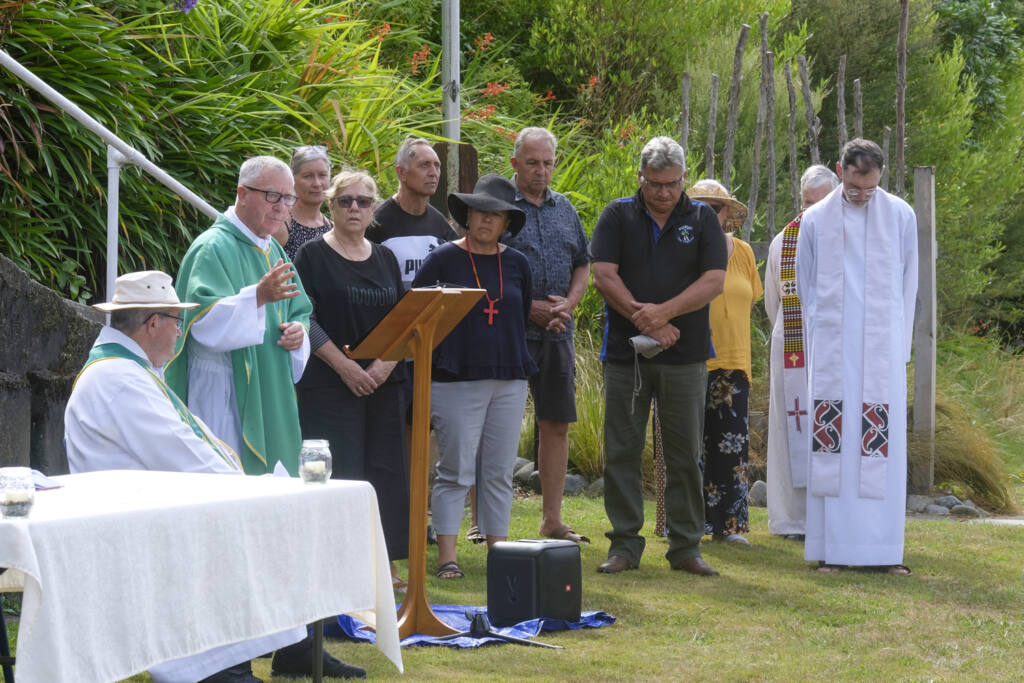
Jean-Baptiste Comte

Arguably the most successful of the early Catholic Māori Missions in New Zealand, was that established in 1844 at Pukekaraka Marae in Ōtaki. The first church at Pukekaraka was built in 1844 by Fr Comte (Pā Kometa) and local Māori.
Jean-Baptiste Comte arrived from France to the Hokianga in 1839, aged 27. He learnt and spoke fluent Māori and spent 14 years in the Mission field. A man of vision, Fr Comte could see the impact the arrival of increasingly large numbers of Pākehā would have on the lives of Māori particularly in the areas of social disruption, technology and pressures on their lands. In 1840, he left the Bay of Islands to begin a mission among Māori in Akaroa. After returning to Kororareka in 1842 he accompanied Bishop Pompallier in 1844 for a visit down the East Coast and was left at Wellington to assist Fr O’Reily with pastoral care among Māori from Wellington to Whanganui. By 1845 Fr Comte had settled at Ōtaki.
As a Marist, Fr Comte was not interested in acquiring land, but in education and evangelisation and he worked hard among his congregation. At Pukekaraka he introduced flour mills, rope making equipment, and bullock drays, and encouraged trade by acquiring a schooner, the Elizabeth, to convey produce to Wellington. This vessel made a number of voyages during 1853–1854, including at least one commanded by Māori captain, Terawatu.
When Fr Comte went back to France in 1854, lack of personnel and resources to maintain the Mission Station at Pukekaraka caused a decrease in ministry in the Māori Mission. In the mid-1880s the momentum was regained under Fr Melu (Pā Werahiko) – who took up residence in Ōtaki in 1883 – Fr Cognet, Vibaud and later Fr Delachienne with periodic visits made by Marist priests including Fr Petitjean, Fr Seon, Fr Maillard, Fr Pertuis and Fr Moreau followed by many more Marist resident priests over the decades.
Source: Marist Messenger
He Tirohanga Whakamua – A Vision for Tomorrow – Pukekaraka E Oho
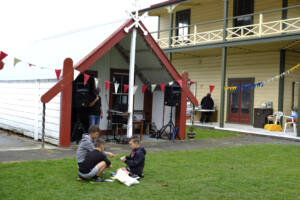
As Pukekaraka looks to the future, its vision is clear: to remain a place of faith, unity, and resilience, where every generation finds purpose and belonging. Anchored in the values that have shaped its past, Pukekaraka envisions a thriving community where Māori and Katorika traditions continue to grow side by side, enriching each other through shared knowledge, faith, and compassion.
Pukekaraka seeks to inspire others, embodying a model of partnership that respects whakapapa while embracing progress. Guided by the Kawenata and the strength of Ngāti Kapu, Pukekaraka aims to be an example of hope and unity for all who seek peace, connection, and spiritual growth. As the world changes, Pukekaraka’s spirit endures – founded in its past, alive in the present, and envisioned for a future where every person is welcomed, every story valued, and every contribution cherished.
For those who walk its grounds, Pukekaraka is more than just a site – it is an experience of a living faith, a thriving community, and a future that remains firmly anchored in the values that matter most.
Nā Maria te tīmatanga; mā Maria te whakaotinga.
Whakaraupapa
1844: Ngāti Kapu rangatira Tonihi extends an invitation to French priests of the Society of Mary – Marist missionaries – to create a Mission at Pukekaraka, establishing a foundation for an enduring Catholic faith partnership.
1840s: The first church, a simple raupō structure, is erected at Pukekaraka, serving as a spiritual centre for both Māori and Pākehā.
1851: The Katorika Mission is formally established on land provided by Tonihi, and later endorsed in the Māori Land Court by his daughter Te Raiti the named owner at the time, symbolising a significant alliance between Ngāti Kapu and the Marist Order.
1859: St Mary’s Church built, solidifying Pukekaraka as a growing Katorika hub. Oldest Catholic Church still in constant use in Aotearoa New Zealand.
1862: Māori gave money for bell; now near the new church.
1881: A landmark decision affirms ownership of the land under Te Raiti Tonihi.
1887: Statues of St Mary and St Joseph gifted to the church by resident priest Fr Melu’s sisters in France.
1894: St Peter Chanel School opened.
1894: Te Ohaki, small whare built on top of Pukekaraka, site of first church and presbytery.
1897: Presbytery built.
1904: 60th jubilee – St Peter Chanel statue added to St Mary’s Church. School gave St Peter Chanel stained-glass window and Māori gave Mary stained-glass window to church.
1901: Grotto built as a shrine to Mary; present grotto dates from 1905.
1904: ‘Roma’, first wharenui, built. Catechists of time were Te Aomarere, Te Pokaitara, Te Hiakai, Taiaroa, Tutuohe (of Ngapuhi) and Hakaria Rangikura. Hakaria rang church bell for over 40 years and bell in Ōtaki Church is still named Te Pere O Rangikura in his honour.
1905: ‘Hine Nui O Te Ao Katoa’, larger wharenui, built.
1907: Statue of St Peter at top of hill unveiled, symbol of the Rock, ‘Kohatu’ on which Catholic Faith founded.
1946: Pukekaraka hosts the inaugural Hui Aranga, a Māori Katorika Easter celebration that cements its role in the wider Māori Katoria community.
1964: Māori tabernacle carved as a ‘pataka’ by John Gardiner of Weriweri, for St Mary’s Church.
1976: Pukekaraka hosts the Hui Aranga for the third time, furthering its legacy as a spiritual and community hub.
1992: New St Mary’s Church blessed and opened.
1996: 50th jubilee of Hui Aranga hosted by Pukekaraka in Ōtaki.
2014: Ōtaki combined with Levin. Fr Percy Kimble sm appointed as parish priest under Marist stewardship. Ōtaki formally separated from Levin in 2021.
2020: A Kawenata (covenant) between Ngāti Kapu, the Society of Mary, and the Catholic Archbishop of Wellington is reaffirmed, reinforcing the initial partnership and a vision for Pukekaraka’s future.
2024: Hato Maria is internationally referred to as a Shrine, continuing as a place of faith, community, and cultural celebration, with new initiatives planned in health, education, and technology.
2024: Ngāti Kapu tangata whenua, led Pukekaraka Catholic community to begin World 24-Hour Rosary, 7 October, in prayer for Jubilee year 2025.